Zuma
 No longer can any man look me in the eye and call himself a rock fanuntil he has heard this masterpiece of magical changes. This is no mererock performance, but a curse upon the Bush clan and their corporatecronies, a fiery invocation to hasten the inevitable fall of the USEmpire. For the opening attack the hardcases gather around the tableand the game is big picture. "The Death and Resurrection Show" sets thescene with an irresistably thunderous tribal dance beat from hardcoreskinbeating primitive Dave Grohl, a simply devastating give upultimatum to false metal guitarists from Geordie and some of the mostimportant imagery to ever be transmitted via the rock medium from themuch maligned and misunderstood genius Jaz Coleman. Next, a hesitantwoman of liberty asks how we can go up against the government anddecides we must all rise at once. Jaz is up for trying to inspire us todo so, and "Total Invasion" lays it on the line for the liars whoblaspheme our names in the infinitely cancerous pursuit of profit.Fireblast riffs and collapsing skyscraper drums lumber asunder as Jazstrangles lizards from his throat to exorcise the Bush-pig demons andlay them in the dirt to perish of thirst as revenge for the third ofthe world they are slowly, meanly, inhumanly killing to keep the coldblood gurgling through their hardened arteries with seconds to go.Next, Jaz assumes the form of an "Asteroid" which crashes into theocean, flooding and laying waste to the proliferating homogenoustechnocracy. It recalls "Whiteout" amped up a zillion volts. Redefiningcyber-punk, "Implant" questions the morality of techno-genetic hybridsand mourns the inevitable loss of diversity that is plunging the racetowards eternal DOOM. Like "Asteroid," the entire song grinds to a haltseveral times for Jaz to scream his rage at the cold science fools andtheir deathsucking paymasters — "You just want to FUCKING CONTROL!"Then the headlong rush of "Blood On Your Hands" orders them to atonefor their crimes and paints a picture of a world laid waste by theiridiotic short sighted greed. It would really be a swell single, and notjust for the blessed inspiration of hearing the lyric, "Poison thewater so only your GM crops grow," infiltrating wishy washy MTV land.This is far beyond mere MALICIOUS DAMAGE. This is the most preciselydirected and accurately targeted distillation of molten rage I haveever experienced. And I've heard a lot of so called hardcore over theyears. The second half briefly drops a rung into more personal headspace. The arm waving wasteland zombie bop "Loose Cannon" recallsimagery from the dreams that inspired their seminal debut album and thecircle is completed. Both this rather odd choice for a single and thenext track reclaim and embellish the "Eighties" chug that poor CursedCobain filched in admiration. This is the only band on the planet whocould get away with a lighters in the air ballad like "You'll Never GetTo Me" probably because they have torches. Shame they didn't replace itwith the rabid "Inferno" which closes UK copies, but has been left offin other regions for obvious reasons. The next single is out this weekand is rock perfected to sum up the personal anger and despair atfalsely mediated visions of a world gone mad. Your mission is to buy"Seeing Red" from a chart return shop NOW and shake up the fakemoney-love kiddypops charts with something of substance, a song upthere with such classics as "The Wait" and "Pssyche." What feeling,loving, angry human could resist the joy of hearing a tune open withthe line, "They're dropping bombs again, and they're doing it in yourname," and continue with the ultimate condemnation of limited smalltown England tedium and ignorance. Grohl's drums shine, reverting moreto Scream patterns than Nirvana. Geordie rips the burning sky to shredswith the greatest one note guitar spears and the bass line is a massivedescending roll of thunder. The most harrowing trip is the eerie anddesolate "Dark Forces" in which Jaz trawls the mind of a desecratingcorporate ogre and survives to report the megalomaniac creep churnings.I wouldn't like to spend an hour locked inside those heads but Jaz is asterner being than I. The final report the megalomaniac creepchurnings. I wouldn't like to spend an hour locked inside those headsbut Jaz is a sterner being than I. The final battle sees the fall of"The House That Pain Built" as Zeppelin's "Kashmir" is ripped apart andrendered a mere grunt. After pain we WILL have JOY. This is one band toempower the will like no other. Our Rubicon approaches. Lets all go tothe Fire Dances once again. So be it! -
No longer can any man look me in the eye and call himself a rock fanuntil he has heard this masterpiece of magical changes. This is no mererock performance, but a curse upon the Bush clan and their corporatecronies, a fiery invocation to hasten the inevitable fall of the USEmpire. For the opening attack the hardcases gather around the tableand the game is big picture. "The Death and Resurrection Show" sets thescene with an irresistably thunderous tribal dance beat from hardcoreskinbeating primitive Dave Grohl, a simply devastating give upultimatum to false metal guitarists from Geordie and some of the mostimportant imagery to ever be transmitted via the rock medium from themuch maligned and misunderstood genius Jaz Coleman. Next, a hesitantwoman of liberty asks how we can go up against the government anddecides we must all rise at once. Jaz is up for trying to inspire us todo so, and "Total Invasion" lays it on the line for the liars whoblaspheme our names in the infinitely cancerous pursuit of profit.Fireblast riffs and collapsing skyscraper drums lumber asunder as Jazstrangles lizards from his throat to exorcise the Bush-pig demons andlay them in the dirt to perish of thirst as revenge for the third ofthe world they are slowly, meanly, inhumanly killing to keep the coldblood gurgling through their hardened arteries with seconds to go.Next, Jaz assumes the form of an "Asteroid" which crashes into theocean, flooding and laying waste to the proliferating homogenoustechnocracy. It recalls "Whiteout" amped up a zillion volts. Redefiningcyber-punk, "Implant" questions the morality of techno-genetic hybridsand mourns the inevitable loss of diversity that is plunging the racetowards eternal DOOM. Like "Asteroid," the entire song grinds to a haltseveral times for Jaz to scream his rage at the cold science fools andtheir deathsucking paymasters — "You just want to FUCKING CONTROL!"Then the headlong rush of "Blood On Your Hands" orders them to atonefor their crimes and paints a picture of a world laid waste by theiridiotic short sighted greed. It would really be a swell single, and notjust for the blessed inspiration of hearing the lyric, "Poison thewater so only your GM crops grow," infiltrating wishy washy MTV land.This is far beyond mere MALICIOUS DAMAGE. This is the most preciselydirected and accurately targeted distillation of molten rage I haveever experienced. And I've heard a lot of so called hardcore over theyears. The second half briefly drops a rung into more personal headspace. The arm waving wasteland zombie bop "Loose Cannon" recallsimagery from the dreams that inspired their seminal debut album and thecircle is completed. Both this rather odd choice for a single and thenext track reclaim and embellish the "Eighties" chug that poor CursedCobain filched in admiration. This is the only band on the planet whocould get away with a lighters in the air ballad like "You'll Never GetTo Me" probably because they have torches. Shame they didn't replace itwith the rabid "Inferno" which closes UK copies, but has been left offin other regions for obvious reasons. The next single is out this weekand is rock perfected to sum up the personal anger and despair atfalsely mediated visions of a world gone mad. Your mission is to buy"Seeing Red" from a chart return shop NOW and shake up the fakemoney-love kiddypops charts with something of substance, a song upthere with such classics as "The Wait" and "Pssyche." What feeling,loving, angry human could resist the joy of hearing a tune open withthe line, "They're dropping bombs again, and they're doing it in yourname," and continue with the ultimate condemnation of limited smalltown England tedium and ignorance. Grohl's drums shine, reverting moreto Scream patterns than Nirvana. Geordie rips the burning sky to shredswith the greatest one note guitar spears and the bass line is a massivedescending roll of thunder. The most harrowing trip is the eerie anddesolate "Dark Forces" in which Jaz trawls the mind of a desecratingcorporate ogre and survives to report the megalomaniac creep churnings.I wouldn't like to spend an hour locked inside those heads but Jaz is asterner being than I. The final report the megalomaniac creepchurnings. I wouldn't like to spend an hour locked inside those headsbut Jaz is a sterner being than I. The final battle sees the fall of"The House That Pain Built" as Zeppelin's "Kashmir" is ripped apart andrendered a mere grunt. After pain we WILL have JOY. This is one band toempower the will like no other. Our Rubicon approaches. Lets all go tothe Fire Dances once again. So be it! - samples:



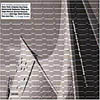 Belgium's Sub Rosa label presents the first in a threatened 10-partseries of double-disc anthologies documenting more than 80 years ofdevelopments in electronically derived music. The hopelessly pedanticliner notes try to justify the inclusions and omissions, and attemptboth to delimit and enlarge the definitions of "noise," but these justseem like a complex series of overwritten excuses for what is basicallyan unstructured assortment of tracks — mostly rare or previouslyunreleased — that are not truly unified by an inclusive theme. Thecompilers have cleverly dubbed this an "a-chronology" to rationalizethe illogical continuity of the sequencing — an Einsturzende Neubautenagro-industrial track from 1998 rubs shoulders with Konrad Boehmer'scompositional avant-garde piece dating from 1966. There is no rhyme orreason to the songs chosen for this compilation, or their sequencing,which is actually somewhat refreshing in the wake of so manycompilations professing to be authoritative history lessons on a genreor time period. Sub Rosa's absurd decade-jumping and too-widedefinitions allow a lot of room for some fascinating pieces toco-exist, whether or not they all make sense together. Listening tothis double-disc anthology, I am reminded of a cerebral late-nightcollege radio DJ programming a fantasy set of his favorite abstractelectronic pieces. The compiler's choices run the gamut from earlycompositions for electronic instruments, to modern laptop-basedexperiments, but with an ear towards largely rhythmless,non-traditionally structured music. I guess that's where the "noise"bit comes in. A listener who is not familiar with the originators andrevolutionaries of electronic music and theory might find this anexcellent starting point for study. The long, academic liner notesshould have been researched more meticulously as there are severaloversights and mistakes, and plenty of typos, but nothing so bad thatit negates the value of the anthology itself. Musique concrete' is hererepresented by future Nazi propagandist Walter Ruttman's cinematictape-collage "Wochende" (1930), a truly impressive, picaresque audionarrative that presages the later classics of the form such as JohnCage's Fontana Mix and the more recent post-industrial dream narratives of Roger Doyle's Rapid Eye Movements.The atonal, sculptured minimalism of Gordon Mumma's "The DresdenInterleaf 13 February 1945" (1965) sounds strikingly modern, and shouldappeal to fans of Soliloquy for Lilith-era Nurse With Wound.Three giants of the scene come together spectacularly in Angus MacLise,Tony Conrad and John Cale's "Trance #2" (1965), a haunted, devotionaldrone piece that transcends its low-fidelity recording. The oftenfascinating Phillip Jeck collaborates with Otomo Yoshihide and MartinTetreault on an untitled live excerpt that is richly detailed andendlessly compelling. The more provocative, political agitants of noisemusic are here represented by a pair of tracks from Survival ResearchLaboratories and Einsturzende Neubauten, both previously unreleased,and both stirring exorcisms of jarring brutality. As one might expect,the contributions from classic innovators Iannis Xenakis and EdgarVarese are typically outstanding. John Cage's incredible cut-and-splicepiece "Rozart Mix" contains some of the same microcosmic drama of TheBeatles "Revolution #9," as well as one of the earliest recordedinstances of record scratching. Sonic Youth's "Audience" (1983) is aninteresting experiment in the live manipulation of sounds: in this casethe applause the band received after a performance is slowed down andstretched to sound like a room full of monstrous demons rhythmicallybanging their heads against the floor. The only really bad inclusioncomes in the form of a pointless ambient space excursion by DJ SpookyThat Submental Prick. Japanese composer Ryoji Ikeda ends thecompilation with the brief but exciting mental tones of "One Minute"(1997). Considered as a whole, or considered in part, Sub Rosa's firstvolume of Anthology of Noise and Electronic Music is a noteworthy assemblage of easily digestible bites of ear-opening sonic explorations.
Belgium's Sub Rosa label presents the first in a threatened 10-partseries of double-disc anthologies documenting more than 80 years ofdevelopments in electronically derived music. The hopelessly pedanticliner notes try to justify the inclusions and omissions, and attemptboth to delimit and enlarge the definitions of "noise," but these justseem like a complex series of overwritten excuses for what is basicallyan unstructured assortment of tracks — mostly rare or previouslyunreleased — that are not truly unified by an inclusive theme. Thecompilers have cleverly dubbed this an "a-chronology" to rationalizethe illogical continuity of the sequencing — an Einsturzende Neubautenagro-industrial track from 1998 rubs shoulders with Konrad Boehmer'scompositional avant-garde piece dating from 1966. There is no rhyme orreason to the songs chosen for this compilation, or their sequencing,which is actually somewhat refreshing in the wake of so manycompilations professing to be authoritative history lessons on a genreor time period. Sub Rosa's absurd decade-jumping and too-widedefinitions allow a lot of room for some fascinating pieces toco-exist, whether or not they all make sense together. Listening tothis double-disc anthology, I am reminded of a cerebral late-nightcollege radio DJ programming a fantasy set of his favorite abstractelectronic pieces. The compiler's choices run the gamut from earlycompositions for electronic instruments, to modern laptop-basedexperiments, but with an ear towards largely rhythmless,non-traditionally structured music. I guess that's where the "noise"bit comes in. A listener who is not familiar with the originators andrevolutionaries of electronic music and theory might find this anexcellent starting point for study. The long, academic liner notesshould have been researched more meticulously as there are severaloversights and mistakes, and plenty of typos, but nothing so bad thatit negates the value of the anthology itself. Musique concrete' is hererepresented by future Nazi propagandist Walter Ruttman's cinematictape-collage "Wochende" (1930), a truly impressive, picaresque audionarrative that presages the later classics of the form such as JohnCage's Fontana Mix and the more recent post-industrial dream narratives of Roger Doyle's Rapid Eye Movements.The atonal, sculptured minimalism of Gordon Mumma's "The DresdenInterleaf 13 February 1945" (1965) sounds strikingly modern, and shouldappeal to fans of Soliloquy for Lilith-era Nurse With Wound.Three giants of the scene come together spectacularly in Angus MacLise,Tony Conrad and John Cale's "Trance #2" (1965), a haunted, devotionaldrone piece that transcends its low-fidelity recording. The oftenfascinating Phillip Jeck collaborates with Otomo Yoshihide and MartinTetreault on an untitled live excerpt that is richly detailed andendlessly compelling. The more provocative, political agitants of noisemusic are here represented by a pair of tracks from Survival ResearchLaboratories and Einsturzende Neubauten, both previously unreleased,and both stirring exorcisms of jarring brutality. As one might expect,the contributions from classic innovators Iannis Xenakis and EdgarVarese are typically outstanding. John Cage's incredible cut-and-splicepiece "Rozart Mix" contains some of the same microcosmic drama of TheBeatles "Revolution #9," as well as one of the earliest recordedinstances of record scratching. Sonic Youth's "Audience" (1983) is aninteresting experiment in the live manipulation of sounds: in this casethe applause the band received after a performance is slowed down andstretched to sound like a room full of monstrous demons rhythmicallybanging their heads against the floor. The only really bad inclusioncomes in the form of a pointless ambient space excursion by DJ SpookyThat Submental Prick. Japanese composer Ryoji Ikeda ends thecompilation with the brief but exciting mental tones of "One Minute"(1997). Considered as a whole, or considered in part, Sub Rosa's firstvolume of Anthology of Noise and Electronic Music is a noteworthy assemblage of easily digestible bites of ear-opening sonic explorations. 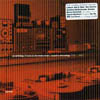 For the second volume of these doctrinaire anthologies, Sub Rosa haswidened its already absurdly large scope even further, now alsoattempting to encompass movements in early 90's techno, 60's free jazzand early 80's industrial in addition to the already expansive universeof classic and modern avant-garde and minimalist composers thatdominated the first compilation. While I admire the tracks chosen —many of them are indeed rare and unreleased — curator Guy Marc Hinant'sthesis is getting ever more tenuous. The compilation opens with"Incantation for Tape" (1953), a brief tape composition by concretemusic innovators Vladimir Ussachevsky and Otto Luening, which seguesinto a longer tape collage by Luc Ferrari, certainly a master of theform. Listening to "Visage V" (1958-9), you may notice intensesimilarities to Jim O'Rourke's recent laptop-based work. This is not acoincidence, as parts of O'Rourke's I'm Happy, And I'm Singing, And a 1, 2, 3, 4seem to have been a direct, unacknowledged "homage" to Ferrari's work.Tod Dockstader's epic "Aerial>Song" (2002) is a gloriouscontinuation of the groundbreaking work he composed in the 1960's —amazingly elaborate soundscapes like "Apocalypse" and "Water Music".Morton Subotnick's pre-Silver Apples of the Moon "Mandolin"(1962) is a lovely, subtle piece combining bells, windchimes and warmlycomplex electronic oscillations. My favorite track by far on thiscollection is "Space travel w/changing choral textures" (1983), a briefsoundpiece by the incomparable Alan R. Splet. Splet famously designedthe sound for many of filmmaker David Lynch's best works, including Eraserhead.Anyone familiar with Lynch's films understands the indispensable impactof the densely surreal, dark and spacious soundtracks created by thenearly-blind Splet. The second disc opens with "Bronchus One.1" (1991),an early sketch of an Autechre track destined for their classic firstalbum Incunabula. It's enjoyable to hear Sean Booth and RobBrown flash back to the days when their music was still fresh, relevantand listenable. The disc also includes relatively rare contributionsfrom the early days of experimental techno, with Choose's "Purzuit ovNoize" (1994) and Woody McBride's "Pulp" (1993) — both darkly pulsatingslabs of analog minimalism. The compilation takes a nose dive into thegutters of early industrial with rare tracks from Laibach and SPK.Laibach's "Industrial Ambients" (1980-82) is a collage of fieldrecordings of actual factory machinery, complete with the murkyklingklang and coldly rhythmic atmosphere of Deutschland's industrialworld leadership. After the brief, inscrutable tangent to a thereminpiece from 1936, the collection ends with a couple of off-topiccontributions by Sun Ra and Don Van Vliet aka Captain Beefheart. It'struly difficult to understand how Sun Ra's cosmic free jazz orBeefheart's primitivist blues fit into the scheme, as neither of thesetracks contain significant electronic instrumentation. The disc alsocontains a Quicktime video clip of Beefheart performing the track circa1969, which is interesting, but ultimately irrelevant. I wholeheartedlyrecommend volume two of Sub Rosa's Anthology of Noise and Electronic Musicnot for its thematic coherence, which is nonexistent, but for the rareand unreleased tracks, which make the compilation worth the price ofadmission.
For the second volume of these doctrinaire anthologies, Sub Rosa haswidened its already absurdly large scope even further, now alsoattempting to encompass movements in early 90's techno, 60's free jazzand early 80's industrial in addition to the already expansive universeof classic and modern avant-garde and minimalist composers thatdominated the first compilation. While I admire the tracks chosen —many of them are indeed rare and unreleased — curator Guy Marc Hinant'sthesis is getting ever more tenuous. The compilation opens with"Incantation for Tape" (1953), a brief tape composition by concretemusic innovators Vladimir Ussachevsky and Otto Luening, which seguesinto a longer tape collage by Luc Ferrari, certainly a master of theform. Listening to "Visage V" (1958-9), you may notice intensesimilarities to Jim O'Rourke's recent laptop-based work. This is not acoincidence, as parts of O'Rourke's I'm Happy, And I'm Singing, And a 1, 2, 3, 4seem to have been a direct, unacknowledged "homage" to Ferrari's work.Tod Dockstader's epic "Aerial>Song" (2002) is a gloriouscontinuation of the groundbreaking work he composed in the 1960's —amazingly elaborate soundscapes like "Apocalypse" and "Water Music".Morton Subotnick's pre-Silver Apples of the Moon "Mandolin"(1962) is a lovely, subtle piece combining bells, windchimes and warmlycomplex electronic oscillations. My favorite track by far on thiscollection is "Space travel w/changing choral textures" (1983), a briefsoundpiece by the incomparable Alan R. Splet. Splet famously designedthe sound for many of filmmaker David Lynch's best works, including Eraserhead.Anyone familiar with Lynch's films understands the indispensable impactof the densely surreal, dark and spacious soundtracks created by thenearly-blind Splet. The second disc opens with "Bronchus One.1" (1991),an early sketch of an Autechre track destined for their classic firstalbum Incunabula. It's enjoyable to hear Sean Booth and RobBrown flash back to the days when their music was still fresh, relevantand listenable. The disc also includes relatively rare contributionsfrom the early days of experimental techno, with Choose's "Purzuit ovNoize" (1994) and Woody McBride's "Pulp" (1993) — both darkly pulsatingslabs of analog minimalism. The compilation takes a nose dive into thegutters of early industrial with rare tracks from Laibach and SPK.Laibach's "Industrial Ambients" (1980-82) is a collage of fieldrecordings of actual factory machinery, complete with the murkyklingklang and coldly rhythmic atmosphere of Deutschland's industrialworld leadership. After the brief, inscrutable tangent to a thereminpiece from 1936, the collection ends with a couple of off-topiccontributions by Sun Ra and Don Van Vliet aka Captain Beefheart. It'struly difficult to understand how Sun Ra's cosmic free jazz orBeefheart's primitivist blues fit into the scheme, as neither of thesetracks contain significant electronic instrumentation. The disc alsocontains a Quicktime video clip of Beefheart performing the track circa1969, which is interesting, but ultimately irrelevant. I wholeheartedlyrecommend volume two of Sub Rosa's Anthology of Noise and Electronic Musicnot for its thematic coherence, which is nonexistent, but for the rareand unreleased tracks, which make the compilation worth the price ofadmission. 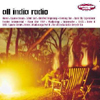 Three excellent musicians from Australia plus three guests haveofficially crafted one of the most elegant and simple instrumental rockalbums I've ever heard. Warm waves of synthesizer tones, sunnymelodies, and a glowing aura all around mix, mash, and breathe as if anatural part of the air and form what can only be described as aheavenly cloud of radiance that is simply not of the material world.Keyboards, drums, and relaxed guitar strumming all intertwine,switching emphasis here and there but never losing sight of an overallpicture that must have taken shape in the mind of every musicianinvolved: a beach, memories of home, or nighttime in a familiar andwarm place. Every note and every second of sound effortlessly evokesfeeling after feeling. All India Radio mix sound sculptures void ofdefinite rhythms and certain melodies with more traditional songstructures and they do it so well that each second comes as a surprise.On "Voodoo Instrumental," a whistling drone underscores the open andreflective sound of a piano chiming in wandering and circular movementsuntil the reversed tones and guitars of "Moon Rise 1989" segue into themelancholy guitar playing of "Waukaringa." The movement of one songinto the next is almost cinematic and is certainly epic in scope, butthe content of each track is completely individual and unique. Featuredwith the CD is a DVD of various movies. Though not all of them aregreat, the video for "Tijuana Dream" is fantastic. It might seem alittle simple at first, but the ending makes watching the whole thingworth it. I really can't say enough about this album and I hope to hearmore from All India Radio. There's not one dull moment anywhere on thealbum and songs like "Evening Star" and "10:58" should not be missed.It's simple, almost child-like, and suffused with such an awesome moodof relaxation and inquisitiveness. This is their third album and basedon its merits I can't wait to hear more.
Three excellent musicians from Australia plus three guests haveofficially crafted one of the most elegant and simple instrumental rockalbums I've ever heard. Warm waves of synthesizer tones, sunnymelodies, and a glowing aura all around mix, mash, and breathe as if anatural part of the air and form what can only be described as aheavenly cloud of radiance that is simply not of the material world.Keyboards, drums, and relaxed guitar strumming all intertwine,switching emphasis here and there but never losing sight of an overallpicture that must have taken shape in the mind of every musicianinvolved: a beach, memories of home, or nighttime in a familiar andwarm place. Every note and every second of sound effortlessly evokesfeeling after feeling. All India Radio mix sound sculptures void ofdefinite rhythms and certain melodies with more traditional songstructures and they do it so well that each second comes as a surprise.On "Voodoo Instrumental," a whistling drone underscores the open andreflective sound of a piano chiming in wandering and circular movementsuntil the reversed tones and guitars of "Moon Rise 1989" segue into themelancholy guitar playing of "Waukaringa." The movement of one songinto the next is almost cinematic and is certainly epic in scope, butthe content of each track is completely individual and unique. Featuredwith the CD is a DVD of various movies. Though not all of them aregreat, the video for "Tijuana Dream" is fantastic. It might seem alittle simple at first, but the ending makes watching the whole thingworth it. I really can't say enough about this album and I hope to hearmore from All India Radio. There's not one dull moment anywhere on thealbum and songs like "Evening Star" and "10:58" should not be missed.It's simple, almost child-like, and suffused with such an awesome moodof relaxation and inquisitiveness. This is their third album and basedon its merits I can't wait to hear more.  There's something about the picture of Paula Kelley on the back of hernew release. She's staring out at you with deep, dark eyes, her handobscuring the rest of her face but revealing a coy, coquettish natureto her. I can't help but think of this image as the trailer poster forsome grand Broadway production, especially with the album's title withsubtitle. The music within only deepens the imaginary conceit, as it isreplete with lush orchestration and soaring vocals. Ladies andgentlemen, Paula Kelley, spotlights please. She's ready for her closeup, so everybody quiet down. "A New Time" begins with a clippingacoustic guitar and Kelley laying down the exposition of love like"warm August breezes" and starlight filling her face with possibility.But there is also another side to the story, one of doubt andmiscommunication that threatens to bring the strings out of theirgentle harmony, all-crashing down in dissonant cacophony. Luckily, thesong never falls apart, but rather perseveres through its delightfulduration. "Could There Be Another World" comes on in a full BurtBacharach attack, with a full orchestra of strings, horns, harp and aten-person choir to accompany Kelley's majestic voice that slips overevery lyric in warm, breathy tones. "I will take myself more seriouslythis time," she declares, as we all should. I see Kelley as the femalelead, who's relentless struggle to succeed through adversity andresolve the bonds of a lost love has still not dampened thebright-eyed, glorious optimism that lies beneath the stormy head, andcomes out in the immense walls of sound that her players (yes, it's herorchestra as denoted in the liner) weave along her world-weary yetpassionate words. When Paula sings the chorus to "I'll Fall In LoveWith Anyone" and the band pauses for a series of drawn out staccatonotes, the heart just breaks right in half from how gorgeous it sounds.The tune pushes the emotion to its climax and delves deep inside for apersonally affecting performance. "How Many Times" takes the big bandaspect to the background letting Paula showcase her own abilities. Thisis the true spotlight song, as the house lights can almost be seendimming as the pit fades to black and the singer becomes ringed by thebright, white bulb. Her raw vocal capabilities are wonderful on theirown, and coupled with an impeccable knack for phrasing and reallycasting feeling and power into those words, she has the potential to beamazingly uplifting or evocatively devastating. She sounds like amodern Dusty Springfield on the end of "The Rest of You," modulatingthose notes with remarkable song craft. It's a blend of original talentand musical appreciation. Of all the tracks, "My Finest Hour" appearsas the most straightforward rock song, though it is still supported bydueling trumpets and choral background vocals that give tremendousweight to the speed and impact of the song. Enough cannot be said ofhow well this album achieves its goals, with every piece of this largeundertaking finding their roles and relishing in them. The Trouble With Successis an absolutely stunning display of musicianship and ambitious conceptdone right, reaching as high as can be reached and pushing it evenhigher. Paula Kelley's the star of this show, and I'm starting to thinkthat underneath that hand, she's hiding a little smile.
There's something about the picture of Paula Kelley on the back of hernew release. She's staring out at you with deep, dark eyes, her handobscuring the rest of her face but revealing a coy, coquettish natureto her. I can't help but think of this image as the trailer poster forsome grand Broadway production, especially with the album's title withsubtitle. The music within only deepens the imaginary conceit, as it isreplete with lush orchestration and soaring vocals. Ladies andgentlemen, Paula Kelley, spotlights please. She's ready for her closeup, so everybody quiet down. "A New Time" begins with a clippingacoustic guitar and Kelley laying down the exposition of love like"warm August breezes" and starlight filling her face with possibility.But there is also another side to the story, one of doubt andmiscommunication that threatens to bring the strings out of theirgentle harmony, all-crashing down in dissonant cacophony. Luckily, thesong never falls apart, but rather perseveres through its delightfulduration. "Could There Be Another World" comes on in a full BurtBacharach attack, with a full orchestra of strings, horns, harp and aten-person choir to accompany Kelley's majestic voice that slips overevery lyric in warm, breathy tones. "I will take myself more seriouslythis time," she declares, as we all should. I see Kelley as the femalelead, who's relentless struggle to succeed through adversity andresolve the bonds of a lost love has still not dampened thebright-eyed, glorious optimism that lies beneath the stormy head, andcomes out in the immense walls of sound that her players (yes, it's herorchestra as denoted in the liner) weave along her world-weary yetpassionate words. When Paula sings the chorus to "I'll Fall In LoveWith Anyone" and the band pauses for a series of drawn out staccatonotes, the heart just breaks right in half from how gorgeous it sounds.The tune pushes the emotion to its climax and delves deep inside for apersonally affecting performance. "How Many Times" takes the big bandaspect to the background letting Paula showcase her own abilities. Thisis the true spotlight song, as the house lights can almost be seendimming as the pit fades to black and the singer becomes ringed by thebright, white bulb. Her raw vocal capabilities are wonderful on theirown, and coupled with an impeccable knack for phrasing and reallycasting feeling and power into those words, she has the potential to beamazingly uplifting or evocatively devastating. She sounds like amodern Dusty Springfield on the end of "The Rest of You," modulatingthose notes with remarkable song craft. It's a blend of original talentand musical appreciation. Of all the tracks, "My Finest Hour" appearsas the most straightforward rock song, though it is still supported bydueling trumpets and choral background vocals that give tremendousweight to the speed and impact of the song. Enough cannot be said ofhow well this album achieves its goals, with every piece of this largeundertaking finding their roles and relishing in them. The Trouble With Successis an absolutely stunning display of musicianship and ambitious conceptdone right, reaching as high as can be reached and pushing it evenhigher. Paula Kelley's the star of this show, and I'm starting to thinkthat underneath that hand, she's hiding a little smile. There's a certain art in scoring an effective soundtrack; enhancing thevisual drama by heightening tension and emotions to set the overalltone of a scene. At best, it's either a standout composition or elseit's blending so effectively with the visual that you wouldn't recallthe music specifically. You just knew it was there. Unfortunately, aswith most original score soundtracks, you tend to hear more on the discthan you would in the film. For Scottish director David MacKenzie'supcoming film, Young Adam, David Byrne has composed fourteen semi-brief pieces of cinematic based music to complement the visual. For Lead Us Not Into Temptation,Byrne kept with the film's background by recording the soundtrack inScotland using members of Belle and Sebastian, Mogwai and Appendix Outto help convey a Glaswegian vibe. In hearing the music prior to seeingthe film, track titles such as "Body in a River," "Seaside Smokes," and"Warm Sheets" automatically conjure up their appropriate scenes, playedby nicely arranged strings, plucked upright bass and wispy drums. Theeerie piece "Mnemonic Discordance" is based around treated guitarsweeps which feature the clang of tuned metals and sampled screeches ofthe New York City L-train's brakes. The classically-influenced"Inexorable" moves along to rhythmic intervals, weaving piano andswooping, melancholic strings which dramatically build in intensity.Going in a totally different direction that the rest of the disc, theHung Drawn Quartet of saxophones are recruited to bop and swing throughCharles Mingus' punchy "Haitian Fight Song." The musicianship is great,although I'd have to see the film to truly appreciate the piece'scontext. For the longer pieces "Speechless" and "The Great WesternRoad" Byrne adds his distinct voice to the mix of laid back grooves,distant strings and keyboards to wind down the disc. Although veryeffective in conveying emotions, Lead Us Not Into Temptationtends to focus a fair bit on the use of strings, which nowadays tendsto unfairly and automatically be associated with being cinematic.However, for Byrne's compositions and their context, anything elsewouldn't do them justice.
There's a certain art in scoring an effective soundtrack; enhancing thevisual drama by heightening tension and emotions to set the overalltone of a scene. At best, it's either a standout composition or elseit's blending so effectively with the visual that you wouldn't recallthe music specifically. You just knew it was there. Unfortunately, aswith most original score soundtracks, you tend to hear more on the discthan you would in the film. For Scottish director David MacKenzie'supcoming film, Young Adam, David Byrne has composed fourteen semi-brief pieces of cinematic based music to complement the visual. For Lead Us Not Into Temptation,Byrne kept with the film's background by recording the soundtrack inScotland using members of Belle and Sebastian, Mogwai and Appendix Outto help convey a Glaswegian vibe. In hearing the music prior to seeingthe film, track titles such as "Body in a River," "Seaside Smokes," and"Warm Sheets" automatically conjure up their appropriate scenes, playedby nicely arranged strings, plucked upright bass and wispy drums. Theeerie piece "Mnemonic Discordance" is based around treated guitarsweeps which feature the clang of tuned metals and sampled screeches ofthe New York City L-train's brakes. The classically-influenced"Inexorable" moves along to rhythmic intervals, weaving piano andswooping, melancholic strings which dramatically build in intensity.Going in a totally different direction that the rest of the disc, theHung Drawn Quartet of saxophones are recruited to bop and swing throughCharles Mingus' punchy "Haitian Fight Song." The musicianship is great,although I'd have to see the film to truly appreciate the piece'scontext. For the longer pieces "Speechless" and "The Great WesternRoad" Byrne adds his distinct voice to the mix of laid back grooves,distant strings and keyboards to wind down the disc. Although veryeffective in conveying emotions, Lead Us Not Into Temptationtends to focus a fair bit on the use of strings, which nowadays tendsto unfairly and automatically be associated with being cinematic.However, for Byrne's compositions and their context, anything elsewouldn't do them justice.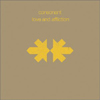 In the Pantheon of independent music, few individuals carry the kind ofmythic cachet that Clint Conley does. As a member of the jarringlyfierce Mission of Burma in the early 1980s, Conley established himselfas a thoughtful, powerful songwriter, crafting some of the mostenduring and seminal pieces of independent rock. The reach of Conley'scompositions like "Academy Fight Song" and "That's When I Reach For MyRevolver" can be seen as direct inspirations to a number of musiciansall over the spectrum, from Sonic Youth's Thurston Moore to pop-technopurveyor Moby. After Burma split in 1983, Conley took an extendedabsence (nineteen years!) from music and in this time started a familyand a new career as a producer for Boston's local WCVB-TV program'Chronicle.' It wasn't until two years ago that this epic writer'sblock lifted and Conley again felt the desire to step onto the stage.From these seeds of desire grew Consonant. Consonant is by no means theClint Conley show, however. Much like in Burma, Conley is surrounded byseveral accomplished musicians in their own right: guitarist ChrisBrokaw formerly of Come and Codeine, Matt Kadane formerly of Bedhead(and Brokaw band mate in The New Year), and Winston Braman formerly ofFuzzy. Also on board is poet Holly Anderson, who along with Conleywrites the bulk of the lyrics for their second album, "Love andAffliction." Each of these members brings their own contributions tothe sound, and upon listening it becomes apparent that Consonant is anextremely apt name. The different influences and additions all cometogether marvelously; never is a song lopsided or unbalanced. Thealbum's opener, "Little Murders" kicks in with a riff that is at onceimposing and yet delicately melodic. It is a deep sounding riff thatseems to fall over itself, perfectly contrasting the clear, reedyvocals. It is a remarkably full song, crashing down with a wave ofsound that rushes through the speakers. Throughout the album, thelyrics touch on relationships in impressionistic language, neverthrough narrative but rather in brief imagery that affects sensuallywith talk of shooting stars and "heat lightning fingers" like the track'Lost Together.' 'Night For Love,' a country-like homage, finds thesubjects locked in an embrace, giving us glimpses of the passion insuch a scene, where the moon and sky are spectators to "love andaffection," opposing the album's title. The band gets more literal on'Mysteries of the Holiday Camp,' a speedy track that captures theessence of traveling on a tour, especially as it is experienced throughthe eyes of someone who's been off the road for quite some time. 'She'sDriving Fast' eschews the deep sound of the other tracks for a sparse,lilting melody that mostly sits on its own, save the vocals. It nicelycaptures the sentimental air of the track, the feeling of early morningevoked by the thinness and pitch of the music. From there, Consonantdelves into the intense 'Cauldron,' with a surging chug of chords andsqualling guitar lines that are somewhat reminiscent of Burma at theirfiery peak. A climax of cymbals ends the song's quick consumption."Love and Affliction" is the sound of a collection of seasonedprofessionals who are capable of creating passionate, artistic rockmusic that can shake you into an enthusiastic pogo and still find itsway to touching the hearts and minds of the listeners, taking themalong to show them the forms rendered by the words and music. Theband's repitoire is stunningly versatile, cathartic and thoughtful.Intensity, poignancy; these are the elements of Consonant, and thesynthesis of these things is a beautiful expression that befits theirname.
In the Pantheon of independent music, few individuals carry the kind ofmythic cachet that Clint Conley does. As a member of the jarringlyfierce Mission of Burma in the early 1980s, Conley established himselfas a thoughtful, powerful songwriter, crafting some of the mostenduring and seminal pieces of independent rock. The reach of Conley'scompositions like "Academy Fight Song" and "That's When I Reach For MyRevolver" can be seen as direct inspirations to a number of musiciansall over the spectrum, from Sonic Youth's Thurston Moore to pop-technopurveyor Moby. After Burma split in 1983, Conley took an extendedabsence (nineteen years!) from music and in this time started a familyand a new career as a producer for Boston's local WCVB-TV program'Chronicle.' It wasn't until two years ago that this epic writer'sblock lifted and Conley again felt the desire to step onto the stage.From these seeds of desire grew Consonant. Consonant is by no means theClint Conley show, however. Much like in Burma, Conley is surrounded byseveral accomplished musicians in their own right: guitarist ChrisBrokaw formerly of Come and Codeine, Matt Kadane formerly of Bedhead(and Brokaw band mate in The New Year), and Winston Braman formerly ofFuzzy. Also on board is poet Holly Anderson, who along with Conleywrites the bulk of the lyrics for their second album, "Love andAffliction." Each of these members brings their own contributions tothe sound, and upon listening it becomes apparent that Consonant is anextremely apt name. The different influences and additions all cometogether marvelously; never is a song lopsided or unbalanced. Thealbum's opener, "Little Murders" kicks in with a riff that is at onceimposing and yet delicately melodic. It is a deep sounding riff thatseems to fall over itself, perfectly contrasting the clear, reedyvocals. It is a remarkably full song, crashing down with a wave ofsound that rushes through the speakers. Throughout the album, thelyrics touch on relationships in impressionistic language, neverthrough narrative but rather in brief imagery that affects sensuallywith talk of shooting stars and "heat lightning fingers" like the track'Lost Together.' 'Night For Love,' a country-like homage, finds thesubjects locked in an embrace, giving us glimpses of the passion insuch a scene, where the moon and sky are spectators to "love andaffection," opposing the album's title. The band gets more literal on'Mysteries of the Holiday Camp,' a speedy track that captures theessence of traveling on a tour, especially as it is experienced throughthe eyes of someone who's been off the road for quite some time. 'She'sDriving Fast' eschews the deep sound of the other tracks for a sparse,lilting melody that mostly sits on its own, save the vocals. It nicelycaptures the sentimental air of the track, the feeling of early morningevoked by the thinness and pitch of the music. From there, Consonantdelves into the intense 'Cauldron,' with a surging chug of chords andsqualling guitar lines that are somewhat reminiscent of Burma at theirfiery peak. A climax of cymbals ends the song's quick consumption."Love and Affliction" is the sound of a collection of seasonedprofessionals who are capable of creating passionate, artistic rockmusic that can shake you into an enthusiastic pogo and still find itsway to touching the hearts and minds of the listeners, taking themalong to show them the forms rendered by the words and music. Theband's repitoire is stunningly versatile, cathartic and thoughtful.Intensity, poignancy; these are the elements of Consonant, and thesynthesis of these things is a beautiful expression that befits theirname.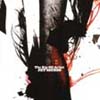 Matt Haines AKA The Rip Off Artist shows incredible nerve by naming his new outing Pet Sounds.The Beach Boys album of the same name probably enjoys the bestreputation of any single record in all pop music history. This shouldcome as no surprise, as previous ROA releases have similarly apedclassic rock album titles such as The Kids are Alright, Pump and Brain Salad Surgery. The Who, Aerosmith and ELP are miles away from the pure pop mastery of Brian Wilson's opus, however. Pet Soundsjust isn't an appropriate title for an album unless the artist caneither back it up with incredible musical content or, alternately,produce some kind post-ironic funny satire in keeping with such anabsurdly grandiose moniker. Matt Haines does neither. ROA's Pet Soundsis such an aggressively average, militantly unfunny album, it justpisses me off that he has saddled it with such an incredibly ballsytitle. These 15 tracks of boring, overprocessed electro-funk shouldhave been named after Pretzel Logic or Rumours, or someother shitty, overrated 70's-era blockbuster album. ROA's musicaltechnique is boring and overused. He begins with excruciatinglyubiquitous house and funk rhythms, and using the standard Powerbooksoftware, edits and processes them into IDM oblivion. The end productis something in the neighborhood of the cut-up funk-house of The SoftPink Truth, without any of the wit, intelligence or groove. Tracks suchas "Meat Shall We Eat" and "Bear Down" are generic, soulless cut n'splice house tracks that somehow end up seeming overlong even thoughthey rarely exceed the four-minute mark. Vocals appear on some tracks,and do nothing to warm up the hackneyed mess. This sort of facelessstreamlining of soul and funk influenced house music has already beendone long ago and better on Thomas Brinkmann's Soul Center albums. Thiswill definitely appeal to all of the IDM fanboys who never seem to getenough of this kind of trite, unexceptional laptop annoyance. MattHaines has invented an absurd biography for himself, and named thisdreary album Pet Sounds in a bid to garner attention to whatwould otherwise be seen as another boring entrée into an overpopulatedgenre. Don't fall for this cynical ruse.
Matt Haines AKA The Rip Off Artist shows incredible nerve by naming his new outing Pet Sounds.The Beach Boys album of the same name probably enjoys the bestreputation of any single record in all pop music history. This shouldcome as no surprise, as previous ROA releases have similarly apedclassic rock album titles such as The Kids are Alright, Pump and Brain Salad Surgery. The Who, Aerosmith and ELP are miles away from the pure pop mastery of Brian Wilson's opus, however. Pet Soundsjust isn't an appropriate title for an album unless the artist caneither back it up with incredible musical content or, alternately,produce some kind post-ironic funny satire in keeping with such anabsurdly grandiose moniker. Matt Haines does neither. ROA's Pet Soundsis such an aggressively average, militantly unfunny album, it justpisses me off that he has saddled it with such an incredibly ballsytitle. These 15 tracks of boring, overprocessed electro-funk shouldhave been named after Pretzel Logic or Rumours, or someother shitty, overrated 70's-era blockbuster album. ROA's musicaltechnique is boring and overused. He begins with excruciatinglyubiquitous house and funk rhythms, and using the standard Powerbooksoftware, edits and processes them into IDM oblivion. The end productis something in the neighborhood of the cut-up funk-house of The SoftPink Truth, without any of the wit, intelligence or groove. Tracks suchas "Meat Shall We Eat" and "Bear Down" are generic, soulless cut n'splice house tracks that somehow end up seeming overlong even thoughthey rarely exceed the four-minute mark. Vocals appear on some tracks,and do nothing to warm up the hackneyed mess. This sort of facelessstreamlining of soul and funk influenced house music has already beendone long ago and better on Thomas Brinkmann's Soul Center albums. Thiswill definitely appeal to all of the IDM fanboys who never seem to getenough of this kind of trite, unexceptional laptop annoyance. MattHaines has invented an absurd biography for himself, and named thisdreary album Pet Sounds in a bid to garner attention to whatwould otherwise be seen as another boring entrée into an overpopulatedgenre. Don't fall for this cynical ruse. Put simply, this is a confusing mix of popular rock radio in the US and80's pop music that somehow proves mostly irresistible. The first fewsongs have an undeniable rock feel to them that just seem a bit flat.When I first heard it I couldn't help but compare it to some US radiostaples but there is something extra that makes such a comparison justa little unfair: the song-writing is very strong and doesn't become oldafter just a few listens plus careful attention has been given toatmospherics and particulars. The smallest sounds make all thedifference as they are given the chance to rise above the anthem-likechoruses and drilling guitars. After the first two tracks and swam by,"How Far Is Too Far?" sweeps and dives into the air by way of chuggingbass playing and symphonic string arrangements. It's a catchy andaddictive tune and I'd be cheating it out if I didn't mention howpretty it is. Maus are very good at marrying the catchy with thesubstantial and for the most part, they strike a good balance betweenthe two on each track. The lyrics are a nice cross between thedramatic, the romantic, and the inquistive: though many of the wordsseem to revolve around a significant other, emotional revolt, orpersonal identity, there's a nice smattering of the surreal and strangehere and there. Though I can't listen to the album multiple times in arow without getting a little bored, there are times when the melodies,rhythms, and lyrics are all stuck in my head and simply won't leaveuntil I listen to the music. And so I must obey and jam out to Musickuntil it becomes just a little too sweet for me. I find that listeningto the first half of the album and coming back to the second half lateris helpful. This music isn't what I typically listen to but I can'tdeny that small doses of it here and there are a lot of fun.
Put simply, this is a confusing mix of popular rock radio in the US and80's pop music that somehow proves mostly irresistible. The first fewsongs have an undeniable rock feel to them that just seem a bit flat.When I first heard it I couldn't help but compare it to some US radiostaples but there is something extra that makes such a comparison justa little unfair: the song-writing is very strong and doesn't become oldafter just a few listens plus careful attention has been given toatmospherics and particulars. The smallest sounds make all thedifference as they are given the chance to rise above the anthem-likechoruses and drilling guitars. After the first two tracks and swam by,"How Far Is Too Far?" sweeps and dives into the air by way of chuggingbass playing and symphonic string arrangements. It's a catchy andaddictive tune and I'd be cheating it out if I didn't mention howpretty it is. Maus are very good at marrying the catchy with thesubstantial and for the most part, they strike a good balance betweenthe two on each track. The lyrics are a nice cross between thedramatic, the romantic, and the inquistive: though many of the wordsseem to revolve around a significant other, emotional revolt, orpersonal identity, there's a nice smattering of the surreal and strangehere and there. Though I can't listen to the album multiple times in arow without getting a little bored, there are times when the melodies,rhythms, and lyrics are all stuck in my head and simply won't leaveuntil I listen to the music. And so I must obey and jam out to Musickuntil it becomes just a little too sweet for me. I find that listeningto the first half of the album and coming back to the second half lateris helpful. This music isn't what I typically listen to but I can'tdeny that small doses of it here and there are a lot of fun.  The continuing spiritual decline of the Western World and the KharmicRepercussions of Tory B. Liar and his deathsucking corporate lap-poodletrips into repressive homogeneity spell one thing for the un-UnitedKingdom. DOOM. However, two hundred years ago many would have calledthe fact that a shining disc with the power to summon demons had flownall the way from Deutschland to help me out MAGIC. Daniel Menche isobviously on a path far out from the vapid mediocrity of the patheticdrivel that passes for much of Western Culture. He styles himself as anEastern Warrior living in the West. I will now style him the UltimateGrand Master of Noise. This one disc is worth a million Merboxes. Thepurpose of Invokeris to summon demons and it works. Beware that this is a dangerous tripand unless you can call on powerful spirits to guide you, you mightunleash horrific consequences for your soul. Luckily I had the help andguidance of the Eternal Spirit of William S. Burroughs to show me howto fold the demons into a New Reality. You might not be so fortunateand this is no path for the weak willed or trendy dabbler in noise. Itmakes Coil's Themes for Hellraiser sound like the bleedin' Theme forthe Magic Roundabout in comparison and that's not a put down deliveredlightly. Do not even think about listening to this unless you are ableto direct Total Nightmare Encounters and use them to your advantage,and the greater advantage of the struggle to stop the farcical tragedythat the megalomaniac fools who think they can crush and control thehuman will are intent on provoking. All hell is breaking loose.
The continuing spiritual decline of the Western World and the KharmicRepercussions of Tory B. Liar and his deathsucking corporate lap-poodletrips into repressive homogeneity spell one thing for the un-UnitedKingdom. DOOM. However, two hundred years ago many would have calledthe fact that a shining disc with the power to summon demons had flownall the way from Deutschland to help me out MAGIC. Daniel Menche isobviously on a path far out from the vapid mediocrity of the patheticdrivel that passes for much of Western Culture. He styles himself as anEastern Warrior living in the West. I will now style him the UltimateGrand Master of Noise. This one disc is worth a million Merboxes. Thepurpose of Invokeris to summon demons and it works. Beware that this is a dangerous tripand unless you can call on powerful spirits to guide you, you mightunleash horrific consequences for your soul. Luckily I had the help andguidance of the Eternal Spirit of William S. Burroughs to show me howto fold the demons into a New Reality. You might not be so fortunateand this is no path for the weak willed or trendy dabbler in noise. Itmakes Coil's Themes for Hellraiser sound like the bleedin' Theme forthe Magic Roundabout in comparison and that's not a put down deliveredlightly. Do not even think about listening to this unless you are ableto direct Total Nightmare Encounters and use them to your advantage,and the greater advantage of the struggle to stop the farcical tragedythat the megalomaniac fools who think they can crush and control thehuman will are intent on provoking. All hell is breaking loose. 
